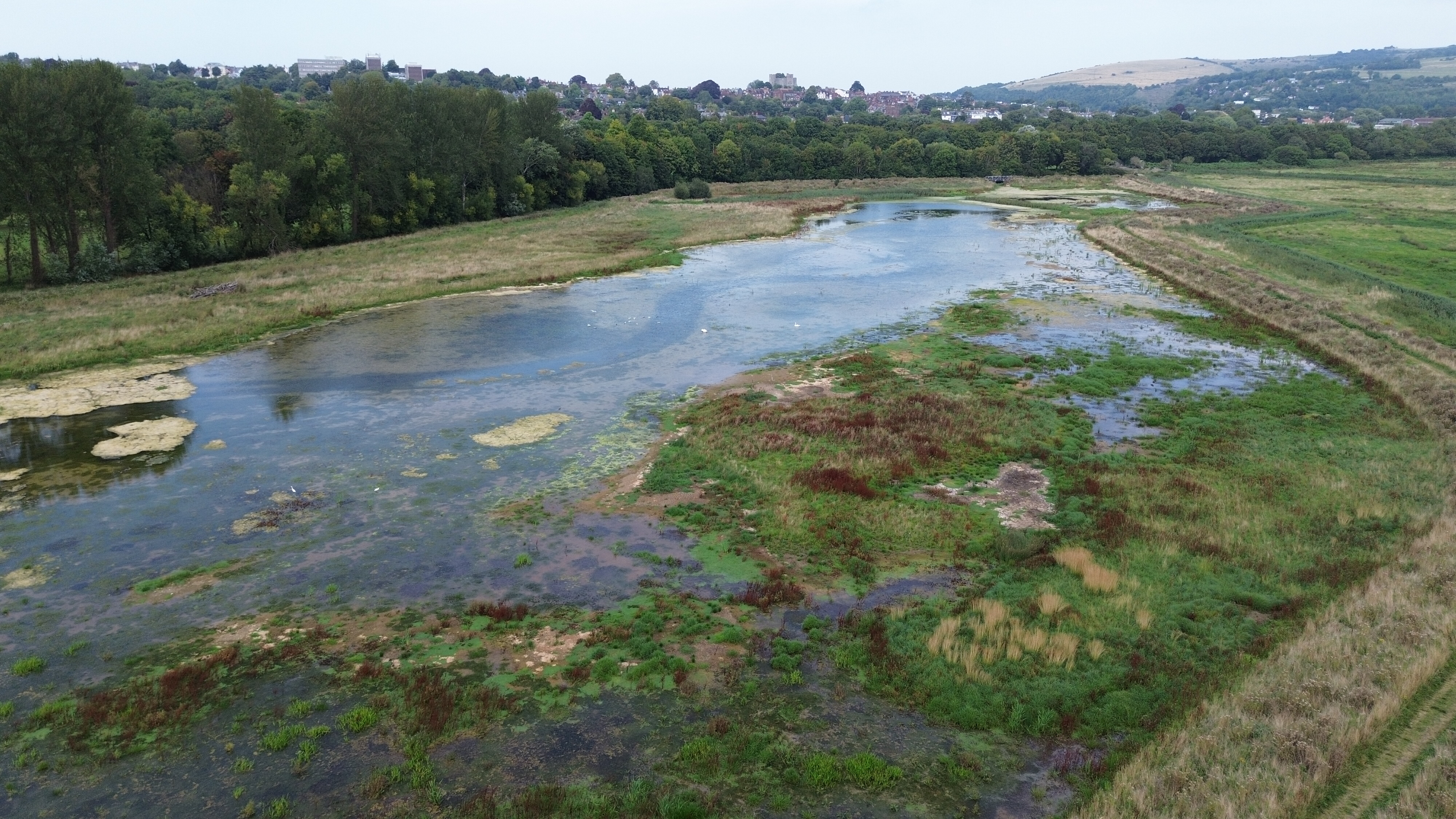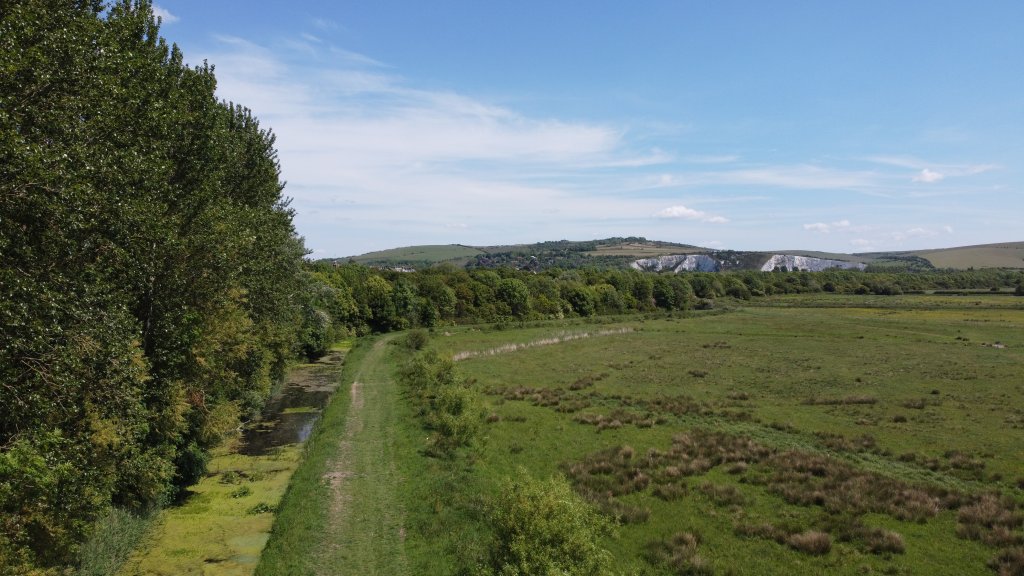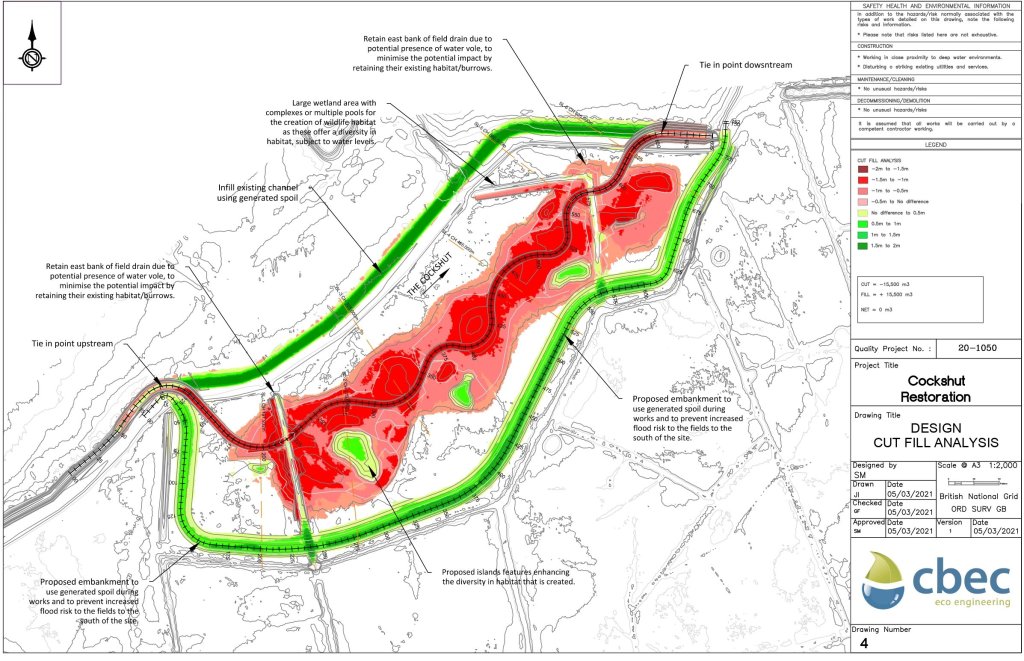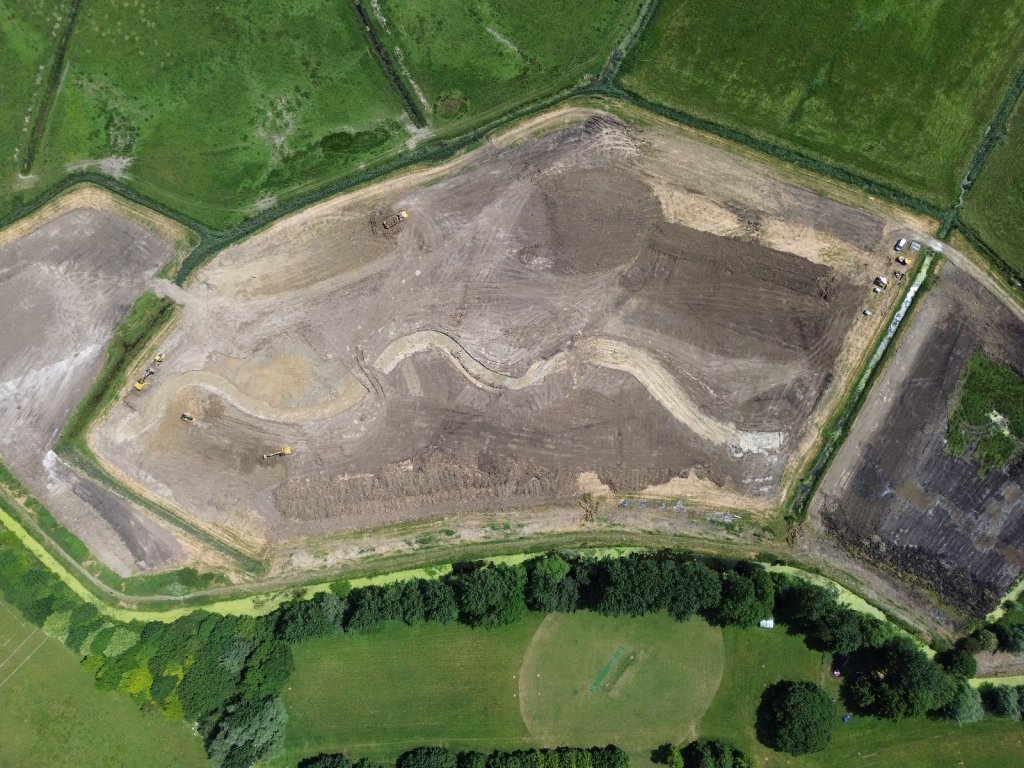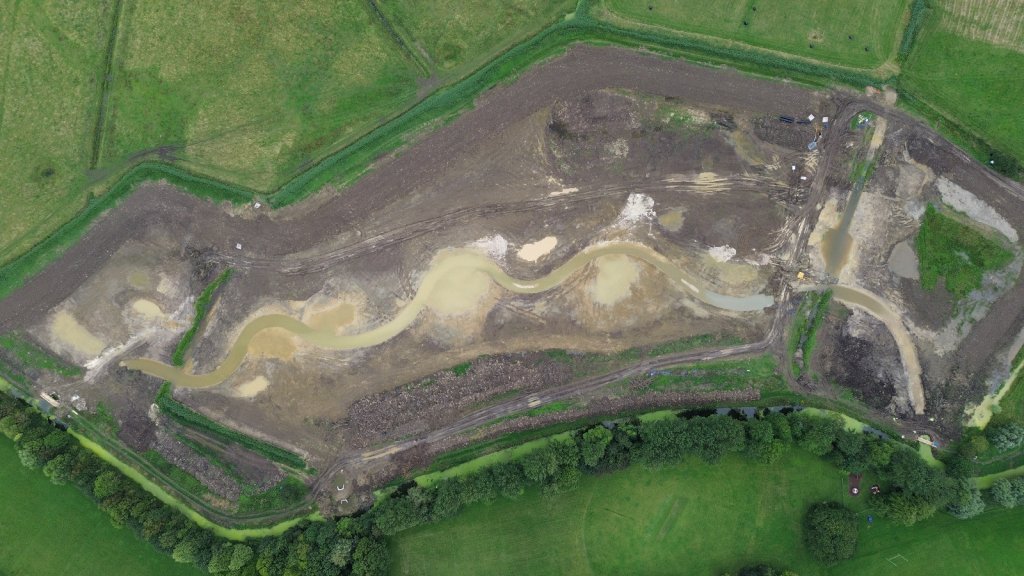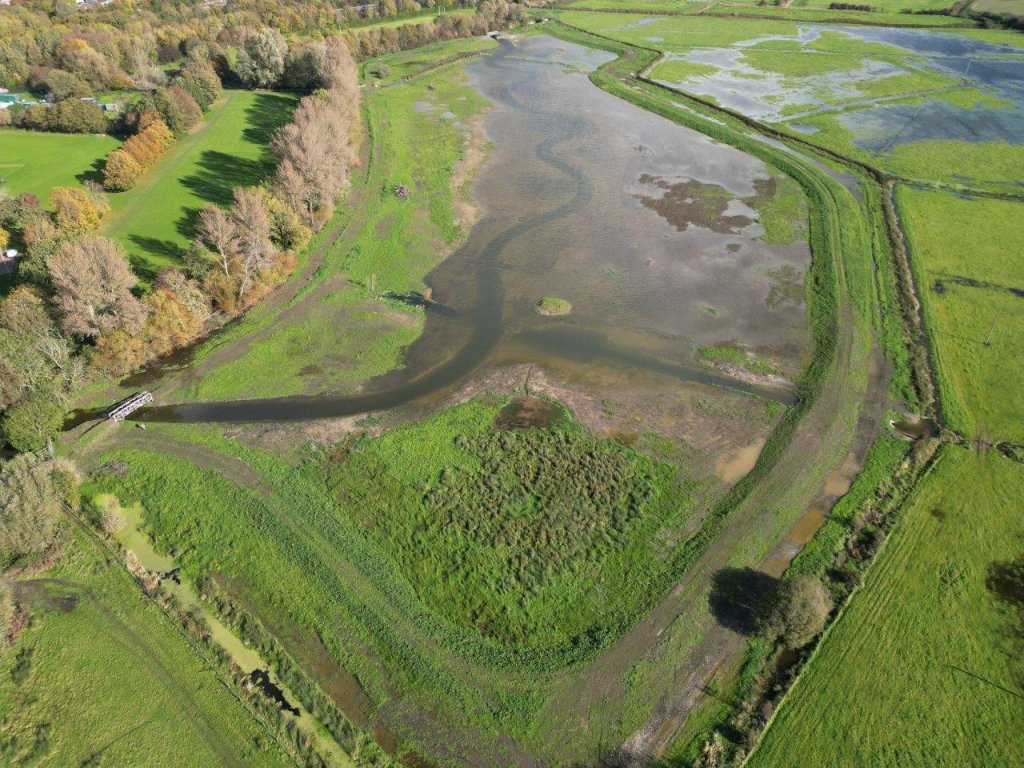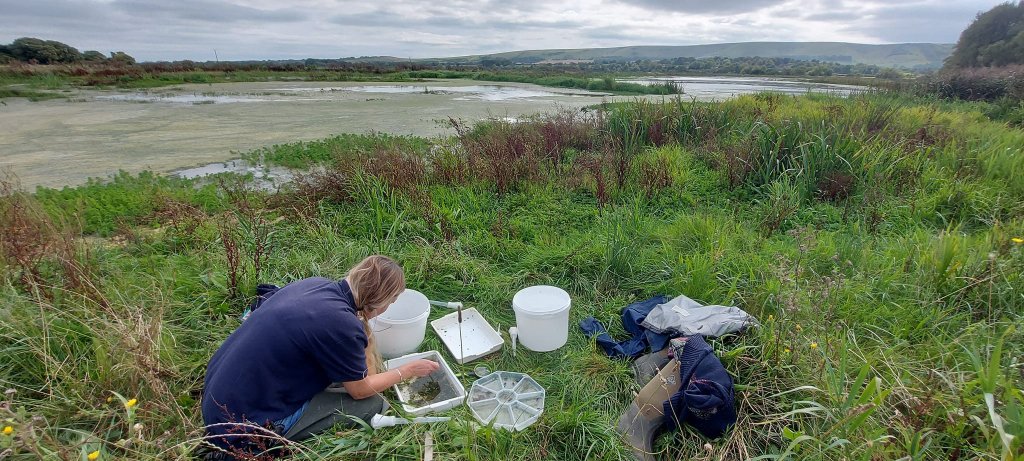The Cockshut - situated on the outskirts of Lewes, adjacent to Lewes Brooks Site of Special Scientific Interest (SSSI) - is a chalk stream that had previously been straightened and realigned to become an embanked ditch. Over time the channel had become degraded and lacked the shape and landscape connectivity of a functional watercourse. The stream had become choked with the highly invasive parrots feather. Overall, there was very little flow and little biodiversity.
This project, a partnership between the Ouse & Adur Rivers Trust, Lewes District Council, South Downs National Park and Lewes Railway Land Wildlife Trust aimed to restore a more natural course for the stream and reconnect it to a series of wetland habitats. All improvements were aimed at increasing the sites biodiversity, its resilience to climate impacts, and enabling the features of the SSSI to return.
The area is popular with walkers and the works sought to improve access via a circular walk with interpretation panels highlighting the areas unique environmental history and the value of chalk streams in the landscape of the South Downs.
Following a period of four-years to investigate, develop and consent, in June 2023 the project began to realign a 670m section of the Cockshut Stream into Lewes Brooks SSSI.
Over the following three months the sites topography was altered, creating several pools, scrapes and enhanced ditches which together form 6.3ha of wetland around the new channel. The new channel has been designed to meander through the site and has a shallow profile, enabling both connectivity with the floodplain and resilience against future periods of low flow resulting from climate change impacts.
Since its completion the wildlife value of the site has increased with a more diverse assemblage of bird life, including egrets, heron, greenshank, kingfisher and white storks being reported. Pre-project surveys recorded no reptiles on the site but since its completion there are several reports and photographs of grass snakes around the newly created hibernacula. Over the next five years, ecological surveys will be undertaken to enable robust comparison of pre-and post-works data.
We were delighted that the project was recognized as the Winner of the Landscape Design and Peoples Choice Categories at the 2024 South Downs Design Awards.

